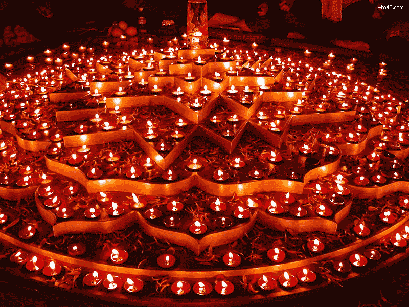Melody queen Asha Bhosle
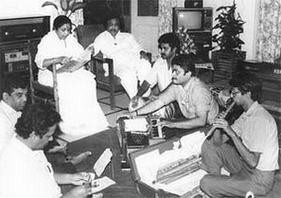 In the 1950s, when the Hindi cinema’s music was monopolized by prominent playback singers like Geeta Dutt, Shamshad Begum and Lata Mangeshkar not so famous yet determinant singer Asha Bhosle was trying to establish her endeavor in the music industry. Asha Bhosale then used to get the songs refused by the top singing divas. The atmosphere in the film industry was quite conventional in the 50s so Asha used to get songs for singing for the so called bad girls and vamps. She even sang songs for the second-grade movies. In the 1950s, she sang more songs than most playback singers in Bollywood; mainly in low budget B or C-grade films. Like all beginners struggle till they get established in any trade – Asha too struggled a lot in both her personal life as well as career. Her earliest songs were composed by A R Qureshi, Sajjad Hussain and Ghulam Mohammed, most of which did not get recognized. She still continued dedicatedly and with blind consistency. Unexpectedly, her voice got noticed in Dilip Kumar-starrer Sangdil (1952), composed by Sajjad Hussain. Consequently, film director Bimal Roy gave her a chance to sing in Parineeta (1953). Raj Kapoor signed her to sing Nanhe Munne Bachche with Mohammed Rafi in Boot Polish (1954), which gained popularity.
In the 1950s, when the Hindi cinema’s music was monopolized by prominent playback singers like Geeta Dutt, Shamshad Begum and Lata Mangeshkar not so famous yet determinant singer Asha Bhosle was trying to establish her endeavor in the music industry. Asha Bhosale then used to get the songs refused by the top singing divas. The atmosphere in the film industry was quite conventional in the 50s so Asha used to get songs for singing for the so called bad girls and vamps. She even sang songs for the second-grade movies. In the 1950s, she sang more songs than most playback singers in Bollywood; mainly in low budget B or C-grade films. Like all beginners struggle till they get established in any trade – Asha too struggled a lot in both her personal life as well as career. Her earliest songs were composed by A R Qureshi, Sajjad Hussain and Ghulam Mohammed, most of which did not get recognized. She still continued dedicatedly and with blind consistency. Unexpectedly, her voice got noticed in Dilip Kumar-starrer Sangdil (1952), composed by Sajjad Hussain. Consequently, film director Bimal Roy gave her a chance to sing in Parineeta (1953). Raj Kapoor signed her to sing Nanhe Munne Bachche with Mohammed Rafi in Boot Polish (1954), which gained popularity.
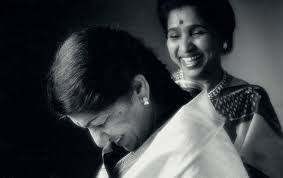 She has rendered the on-screen singing voice for generations of actresses making them look attractive and striking. As we all know, songs add galore, anecdote, and push the story line in sequencing of a movie. They also add to the expressive content; the audience is drawn to music usually and they help the audience connecting to story as well. Indian films from beginning have always used music, and the Indian audience also watches some movies only for its good music. For them, nothing provides good entertainment than good music. Most of the movies have situational songs, piece of instrumental music; sometimes even the songs are played as part of background music.
She has rendered the on-screen singing voice for generations of actresses making them look attractive and striking. As we all know, songs add galore, anecdote, and push the story line in sequencing of a movie. They also add to the expressive content; the audience is drawn to music usually and they help the audience connecting to story as well. Indian films from beginning have always used music, and the Indian audience also watches some movies only for its good music. For them, nothing provides good entertainment than good music. Most of the movies have situational songs, piece of instrumental music; sometimes even the songs are played as part of background music.
Asha Bhosale is incomparable when it comes to expressively delivering a song; she is simply brilliant in her craft. She is so good in her work that many times she is very near to the heroine’s voice. Madhubala, Asha Parekh, Helen, Tanuja, Saira Bano, Sadhana in later years Rekha, Sridevi, Jayaprada, Poonam Dhillon, and Tina Munim she sang for these and many more heroines. Come the next generation of heroines like Tabbu, Kajol, Farha, Rani Mukherji she sang for most of them. She grew from strength to strength with each generation of actors.
She sang songs of all genres. Be it a Rock, Classical Blue, Lullaby, Classical, High Classical, Romantic, Rap, Hip Hop, Cabaret, a Kavalli, a Bhajan, a sad song – you name the genre and she has sung it. She has sung in more than 20 languages including Indian and Foreign, 11,000 solos and about 10,000 duets.
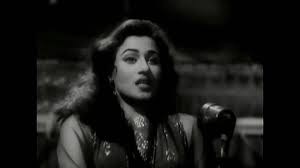 She rose to fame when O.P.Nayyar gave her a break to sing songs for ‘Naya Daur’ (1957). It was a movie made by B.R.Chopra. Her duet with Mohammed Rafi “Maang Ke Saath Tumhara penned by Sahir Ludhiyanvi, is an everlasting song. In this movie she sang all the songs for the leading actress, Vaijayanti Mala. Asha never looked back after the success of ‘Naya Daur’. Do you know the queen of 1950s Madhubala used recommend all her producers and directors Asha Bhosale’s voice for her songs. Asha’s voice suits Madhubala so aptly. Her ‘Aaiye Meherbaan Baithiye Jaaneja’ from the classic Howrah Bridge (1958) is one more gem. Madhubala looks so appealing and so seducing without much ado of make-up and without exposing her body – but she looks stunningly appealing on the screen enacting Asha’s velvety and romantic song. Please watch the song and its eternal charm.
She rose to fame when O.P.Nayyar gave her a break to sing songs for ‘Naya Daur’ (1957). It was a movie made by B.R.Chopra. Her duet with Mohammed Rafi “Maang Ke Saath Tumhara penned by Sahir Ludhiyanvi, is an everlasting song. In this movie she sang all the songs for the leading actress, Vaijayanti Mala. Asha never looked back after the success of ‘Naya Daur’. Do you know the queen of 1950s Madhubala used recommend all her producers and directors Asha Bhosale’s voice for her songs. Asha’s voice suits Madhubala so aptly. Her ‘Aaiye Meherbaan Baithiye Jaaneja’ from the classic Howrah Bridge (1958) is one more gem. Madhubala looks so appealing and so seducing without much ado of make-up and without exposing her body – but she looks stunningly appealing on the screen enacting Asha’s velvety and romantic song. Please watch the song and its eternal charm.
Asha recalls that till 90s recording studios used to be huge places built to accommodate vast numbers of musicians with the singer placed in a separate cabin to minimize any audio overspill. Till then each song was recorded live. There would be huge orchestras – sometimes as huge as 100 instruments were used to accompany a song and each song was recorded in one single go. There was no dubbing. The singer had to work with the orchestra and if anyone made a mistake, he/she would start all over again. That’s how each song took long hours of recording. I think friends there is no comparison to those golden age songs. The hard work of singers and instrument players (the orchestra) is unmatched. Today the story is all different; the songs are recorded in bits and pieces. Where singer’s voices are pre recorded and music is mixed and matched. They are simply fabricated songs.
 Asha credits her co-singer in her successful endeavor. She says Mohamed Rafi was a stickler for perfection; whereas, Manna Dey was the best classically trained singer and Kishore Kumar was breeze like he was always ready to experiment with different styles and tunes. He was like a whiff of wind. He could never be pinned down. She says she could experiment different styles with Kishore because they both shared similar ideas. Asha always says that all singers are actors; they just act with their voices.
Asha credits her co-singer in her successful endeavor. She says Mohamed Rafi was a stickler for perfection; whereas, Manna Dey was the best classically trained singer and Kishore Kumar was breeze like he was always ready to experiment with different styles and tunes. He was like a whiff of wind. He could never be pinned down. She says she could experiment different styles with Kishore because they both shared similar ideas. Asha always says that all singers are actors; they just act with their voices.
 From the mid-60s and throughout the 1970s Kishore Kumar and Asha Bhosle gave some of the most brilliant gems of songs. These great songs were especially prized by the brilliant composer Rahul Dev Burman, famously known as “Pancham”. He brought elements of western pop and hip-shaking, beat group and hippy energy to his music. Asha says “Rahul Dev’s music was way ahead of its time.” She’s right. She says. “He had so many different styles and rhythms in his music. You can hear jazz, Latin, that John Barry, super-spy sound, some blues, calypso and pop in his music. Alongside the hundreds (perhaps thousands, no one really knows) of film scores Bhosle sang on, there were many other works. She made a handful of private albums later.
From the mid-60s and throughout the 1970s Kishore Kumar and Asha Bhosle gave some of the most brilliant gems of songs. These great songs were especially prized by the brilliant composer Rahul Dev Burman, famously known as “Pancham”. He brought elements of western pop and hip-shaking, beat group and hippy energy to his music. Asha says “Rahul Dev’s music was way ahead of its time.” She’s right. She says. “He had so many different styles and rhythms in his music. You can hear jazz, Latin, that John Barry, super-spy sound, some blues, calypso and pop in his music. Alongside the hundreds (perhaps thousands, no one really knows) of film scores Bhosle sang on, there were many other works. She made a handful of private albums later.
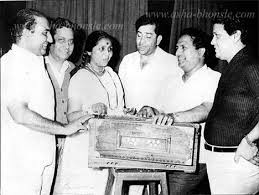 Asha Bhosle says she is not fond of current songs as they largely cater to masses that prefer rhythm over melody. The current situation is such that everybody wants to dance. Be it old or young, everybody wants to dance and therefore today’s songs are rhythm based and lack the melody. Any composition depends both on melody and rhythm. Melody adds to the quality of the song, whereas rhythm adds to the pace of the song. Rhythm is measured by time, whereas melody is measured by the notes. There are several notes in a given form of classical music. Both western and eastern forms of music are solely dependent on musical notes. It is important to know that the musical notes add to the melody of the song. On the other hand, the timing of the song is dependent on the rhythm set in composition. Any musical composition for that matter can shine only if it done with proper melody and rhythm. If the melody fails then the composition may not attract the listeners. The same is true in the case of rhythm too. It is said that rhythm makes our feet to dance, whereas melody makes our heads to nod in appreciation. Both are considered to be the two eyes of music. These are the differences between the two words, namely, melody and rhythm.
Asha Bhosle says she is not fond of current songs as they largely cater to masses that prefer rhythm over melody. The current situation is such that everybody wants to dance. Be it old or young, everybody wants to dance and therefore today’s songs are rhythm based and lack the melody. Any composition depends both on melody and rhythm. Melody adds to the quality of the song, whereas rhythm adds to the pace of the song. Rhythm is measured by time, whereas melody is measured by the notes. There are several notes in a given form of classical music. Both western and eastern forms of music are solely dependent on musical notes. It is important to know that the musical notes add to the melody of the song. On the other hand, the timing of the song is dependent on the rhythm set in composition. Any musical composition for that matter can shine only if it done with proper melody and rhythm. If the melody fails then the composition may not attract the listeners. The same is true in the case of rhythm too. It is said that rhythm makes our feet to dance, whereas melody makes our heads to nod in appreciation. Both are considered to be the two eyes of music. These are the differences between the two words, namely, melody and rhythm.
This brilliant and vivacious singer has lived her life on her own terms without a trace of hypocrisy. If you look at her life closely, you will learn that successful people maintain success by consistently learning and adapting to the environment around them.









































